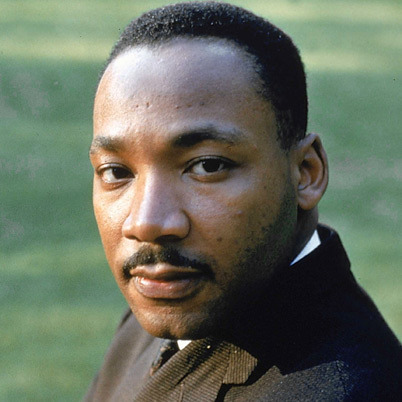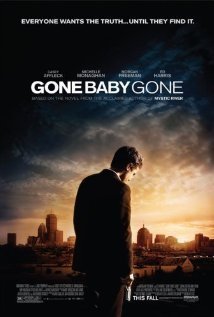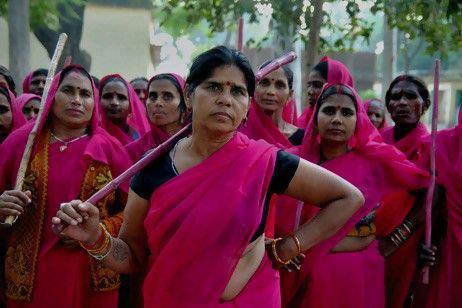A Friendly Firearm Debate – Part 2 – Safety
Read Part 1
Seth rebuttal 2:
Jonalyn – I chimed in here because I regularly enjoy reading your thoughts (and your readers’ thoughts) — you speak to and connect with worlds far outside my regular haunts. But, this is one issue where I can’t get my head around the other side’s position; perhaps we are talking past one another.
The car/gun analogy is one I see a lot, and it is deeply problematic. Cars are a tool, sure–for transportation. Used improperly, they can be lethal (and often are). But guns are designed to be lethal. That’s a crucial distinction.
It is bizarre if not horrific that in the U.S., we regulate access to cars more stringently than we do access to guns. Obviously there are millions of guns in circulation already, so the problem of guns isn’t going away overnight. But it’s clear that stronger, better gun laws would have prevented at least some mass murderers of recent years from getting their hands on guns, or at least would have reduced their capacity to kill as many people as they did. And it’s also clear that other industrialized nations’ more stringent gun laws have reduced gun violence (including Australia, where some of the same frontier/individualistic cultural norms exist, and which had a high rate of gun ownership and schoolyard killings before 1996, when strong gun laws were passed). Yes, the violence is in the heart. But the Chinese example actually speaks to my point: no one died there, because a knife is far less deadly than a gun.
As for a metal detector security system at schools: if that’s the solution, we’ve already lost. Civil society should produce public spaces where safety and civility are the norm. More guns are not the answer for creating such spaces. Yes, that means we live with some amount of risk. But it’s far riskier to continue down our current path. I’m afraid mass private ownership of guns for self-defense, like the “security theater” of the TSA, produces the illusion of security more than the reality of it.
Aside from the likelihood that guns in schools would be misused due to fear or confusion, I signed up to be a teacher, not a soldier or a policeman. I know you went through training and education to carry a firearm; I have no interest in doing so myself, both for religious and pedagogical reasons. Martin Luther King, Jr., who owned many guns in the 1950s and applied unsuccessfully for a concealed carry permit in 1956, decided to remove all the guns from his home in the early 1960s, in spite of receiving repeated death threats and anticipating (correctly) that he might be a victim of gun violence.  He said getting rid of his guns gave him greater moral clarity. King was not naïve about his personal safety, but he understood his faith to prohibit violence. I am far less likely than King was to be a victim of gun violence, but in my position as a teacher, there is (obviously) a small risk. But my faith, along with my belief that more guns make us less safe, compel me to avoid owning and carrying guns for self-defense. Pedagogically: I can’t imagine carrying a gun into a seminar or a lecture. The extremely unlikely chance of an assault is far outweighed by my certainty that the gun would stifle the freedom of our community. Alan Jacobs (faculty member at Wheaton) put this well in the American Conservative.
He said getting rid of his guns gave him greater moral clarity. King was not naïve about his personal safety, but he understood his faith to prohibit violence. I am far less likely than King was to be a victim of gun violence, but in my position as a teacher, there is (obviously) a small risk. But my faith, along with my belief that more guns make us less safe, compel me to avoid owning and carrying guns for self-defense. Pedagogically: I can’t imagine carrying a gun into a seminar or a lecture. The extremely unlikely chance of an assault is far outweighed by my certainty that the gun would stifle the freedom of our community. Alan Jacobs (faculty member at Wheaton) put this well in the American Conservative.
Jonalyn’s final rebuttal:
Guns are designed to be many things; they are tools, but they are not simply lethal tools. The telos of a firearm is to throw a projectile for multiple purposes. It is considered lethal force in certain situations. It is not lethal when hitting a target.
But it still true that both are tools. A car is for moving people and things. Firearms are used for hobbies, competitions, hunting, defense, military, etc. In the latter, they are tools of defense with the hope they would never have to be used for such.
If I were ever in a position where I’d need to use my weapon, I would hope it would stop my aggressor, not kill him. Again, this shows how a firearm doesn’t produce violence, rather it can stop violence. The same is true for why I carry in the woods. When I see a mountain lion (I saw one this year) or a bear, I wanted a tool that could frighten or stop these animals and protect my son who would make a nice snack for either of them. My husband’s rifle is a tool that has provided food in the form of an elk to our family. The tools are bringing life for us, not death. Using our weapons can be an act of responsibility not automatically an act of hubris (as Alan Jacob’s article suggests).
The manufacturing of firearms is regulated more than you might believe, much like the manufacturing of vehicles. You can’t even create a potato gun without getting a serial number and approval. All firearms are serial numbered and any newly invented gun must have approval through the ATF (Bureau of Alcohol, Tobacco and Firearms and Explosives).
Guns are not complicated like automobiles. And we see very few accidents compared to the accidents we see with automobiles. Most firearms have safeties, like cars have seatbelts and airbags. But there’s no regulation on a car that keeps it from going over 35mph (all speeds above that are actually “dangerous”). There are not cars that automatically shut off if a driver has ill-intentioned thoughts (though the car breathalyzer might be one exception). In this sense, both cars and firearms are similar.
Here is one major difference: you don’t need to be fingerprinted and entered into the criminal database to get a license for a car, like you do to get a conceal carry permit. That experience shocked me to realize that my name, face and identity was entered automatically into a database that put me in suspicion, simply because I wanted to be able to conceal carry to protect those I love.
I would like to see more training for gun owners, like drivers’ ed or sex ed. I would like to see teaching that separates firearm carrying from violence instead of supergluing these two together. But as long as we do not value firearms, we will not educate others about them. We treat firearms like poisonous snakes: avoid, avoid, avoid. Public schools offer sex education and driver’s education but not firearm education. Let’s implement firearm education immediately. Truth is, far more die from automobiles and abortions than are killed by firearms. Yet, the national attention guns are given (guns= violence) you’d think firearms are the number one plague on our nation. The attention is disproportionate to me and proves that lack of education is a core part of the problem.
Regarding Australia again, I want to re-iterate that Australia is a very different culture. Gun violence was extremely low (and trending downward) prior to the 1996 bill. And the decrease in homicides is no more an indication of the success of the ban than the increase in assaults and child kidnapping is a failure of the ban. In short, the law did nothing to change the cultural milieu. Only 7% of Aussies owned firearms at the time of the ban and most Australians were pro-gunban even before the Port Arthur massacre. Firearms are not an important part of Australian culture, their constitution, or even their history. Regarding the stats of disarmament, I believe you’ve correlated a decrease in the violent crimes to disarmament without noticing a key detail. Violent crimes was already in decline. In fact, disarmament slowed the decrease in violence, which speaks to the over-arching enigma. Firearms can both cause and prevent violence.
I’d like to challenge your (and Alan Jacob’s) definition of what a civil society looks like. What makes you think that a society where civilians carry firearms is ipso facto an un-civil society? Does it seem like a Western dueling society? It has long been believed that the possibility of swift justice makes for a more polite society. An example may help. I think a scene from Gone Baby Gone does a good job showing that. Have you seen that movie? Do you recall the one and only time Casey Affleck’s character fires? It’s when he sees the corpse of a molested child with the killer beside it. He knows he’s found the killer and he fires. Responsible firearms were part of that swift justice.
Honestly, Seth, I’m very glad you signed up to be a teacher. I did, too. But, as I read this sentence (I know you went through training and education to carry a firearm; I have no interest in doing so myself, both for religious and pedagogical reasons.)I hear you choosing not to defend yourself or those you love. The nice thing about the current gun laws is that you have this choice. I support this choice. It could be reversed by forcing everyone to take tactical carrying classes and learn firearm defense, but we’d consider that a violation. So why push others to not defend themselves?
The post from Alan Jacobs concerns me as it assumes that gun-toting women like me live with paranoia. I do not appreciate that name-calling nor do I find it true of my life. I regularly put myself into relationally courageous situations that require risk and vulnerability. I do not live in fear of being attacked. If I did I would never post this blog publicly.
You can take all my weapons away and I still resist fear. My hope rests in the God of Israel, not in my weapons. I want to live wisely, to steward the tools I can purchase and legally use to protect my son.
Alan Jacobs’ statement quoted here confused me: “We can be absolutely sure that within a few years more people would be killed by teachers who fired their weapons accidentally or in misplaced anger or fear, or by students who stole their teachers’ guns, than have ever been killed in school massacres like those in Newtown and Columbine” I’m beginning to doubt Jacobs knows how a gun works. Firing a gun accidentally is incredibly rare and difficult. And in terms of stealing teacher’s guns, this used to be a fear of mine. “What if I have a gun and someone steals it from me?”
Simply having a weapon makes stealing incredibly unlikely. A meta-study of media reports show that in 80% of cases of a struggle with a firearm, the good guy ends up with the firearm. That’s cases where there is a struggle, which means the perpetrator has to be close enough before revealing he’s a threat. And that situation is unlikely, as the stats show. When you carry a firearm you do not allow a threatening individual to come up close to you before you draw and make your intentions known. If a firearm is under lock and key in schools, theft is even less likely. I’d imagine schools could protect their weapons as well as they protect grades, student confidentiality or anything else they value.

Surely, we don’t fear when a law enforcement officer steps onto a playground or worry that shop with cops is putting our children at risk even while the cops are armed. We know he or she knows how to handle their weapon and protect those who play at her feet. In the same way, teachers would have to be trained, and trained well.
[image error]
usacarry.com
My concern is that most gun-control advocates are not getting into the shoes of the many reasons I or anyone else would want to own a firearm. When you say you can’t understand, I hope this dialog began to give you a few ways you could step into my shoes. It is not hubris to believe you can operate a weapon, just as it’s not hubris to believe you can teach thousands of students at a university. Hubris is assuming you can do more than you are trained for, equipped for, prepared for.
The main problem as I see it: if law-abiding citizens comply with dis-armament, where does that leave them when lawbreakers threaten them with illegal guns. In Great Britain, the police are once again carrying firearms. Adam Lanza’s act was illegal from start to finish. He robbed his mother of her guns, he murdered her, he broke into a school that had a no-gun policy and used his robbed weapons to kill children. Lanza was also underage, which meant he couldn’t legally get a firearm. So no background checks laws would have touched him.
In short, these mass killings shock our imaginations to want to do something. But the response from gun-control advocates seem more concerned about laws that would not have stopped the Lanza’s of the world. Many protocols can be put in place, for instance, I’d love to see laws requiring a higher age to carry, and laws that eradicate the in-state exemption for background checks. I’d like to see laws offering firearm education. Above all, I think we need to get a little more serious about better protecting children.
Why is the national discussion not about protocols or cultural change but about decades-old firearm disarmament that demonizes gun owners? Do we really care about safety? Or do we just care about getting rid of all firearms?
I get how you’re wanting to take the gun out of Lanza’s hand, but do you think that would have stopped Lanza? Sure no one was killed by the Chinese pen stabber, but the men in India’s recent gang rape were also unarmed. They didn’t need a weapon to gang-rape and murder their female victim. The heart is creative in its evil.

The Gulabi gang (from Hindi meaning “pink gang”) is a group of women vigilantes and activists originally from Banda, India, active across North India as of 2010. Formed in 2006 as a response to widespread domestic abuse and other violence against women, Gulabis visit abusive husbands and beat them up with laathis (bamboo sticks) unless they stop abusing their wives. I’d imagine they are less a target than an unarmed woman.
I think it’s safe to say that I definitely disagree with the Vanity Fair piece and your point that massive private gun ownership produces an illusion rather than a reality of more protection. If we want to talk about illusions, I believe gun bans also produce an illusion of safety. Right now most of the gun bans are not even speaking to the guns used in the overwhelming majority of all crimes. People are very worried about the assault rifles when they account for less than 3% of all gun violence.
One of the main reasons I carry is that sometimes weapons are the only way to avoid violence. Sounds counter-intuitive, right? I recommend you take a look at this Atlantic Monthly article for another perspective: ).
The simple movement to draw my firearm is enough, for most criminals, to motivate them to cease and desist. Why rape this woman when hundreds others don’t have a weapon?
The second and most important reason I carry . . .
to be continued Friday, 10 am in Part 3.
Jonalyn Fincher's Blog
- Jonalyn Fincher's profile
- 9 followers



